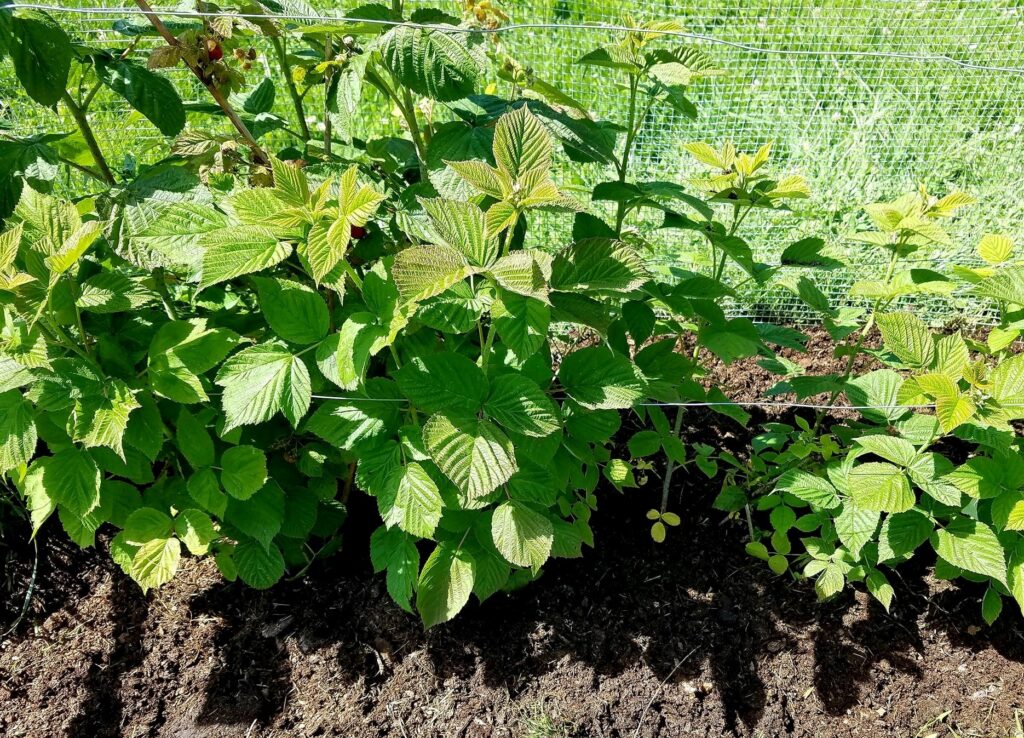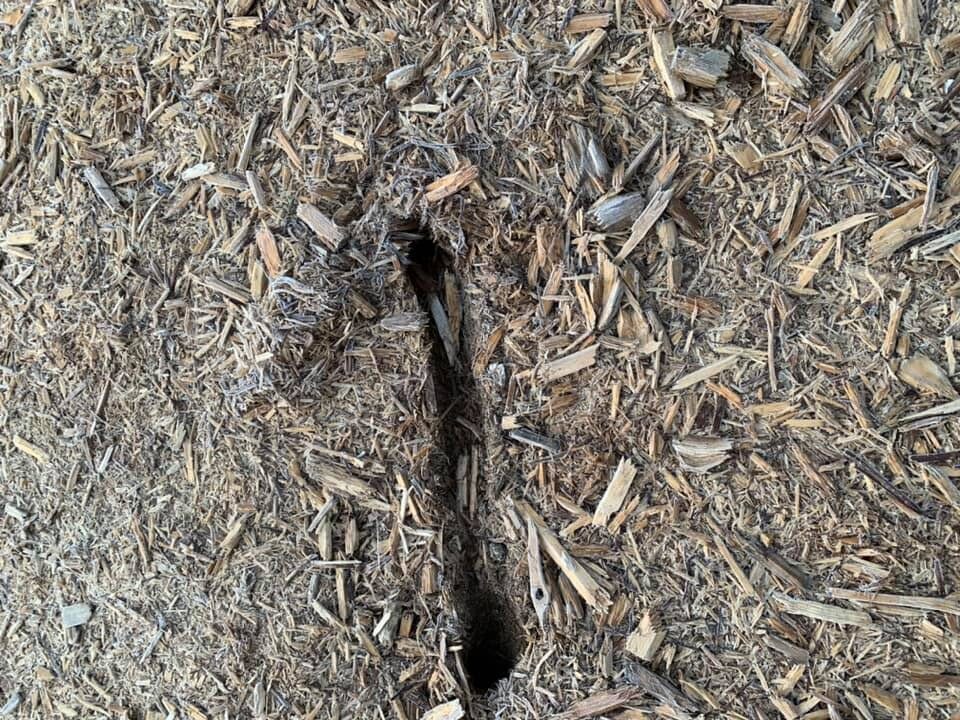Raspberry is a popular fruit grown for its fruits; raspberry fruits are red in color and can be eaten fresh or used for jams, desserts, and more. Proper care is crucial for raspberry to grow and thrive. One important cultural practice for raspberry plants is mulching. This act creates optimal growing conditions for your raspberries
Mulching is the act of applying a protective layer of material called mulch on the topsoil to conserve moisture and control weeds. Using the right mulch provides many benefits for the growth of raspberry plants; it can improve soil health, suppress weeds, regulate soil temperature and moisture, and protect plants. Two types of mulches can be used on raspberry plants; Organic mulches and Inorganic mulches. Selecting the best mulch for your raspberry patch depends on factors like climate, mulch properties, and availability.

Using Organic Mulch For Raspberry
In my opinion, organic mulch is the best choice for raspberries. Organic mulch is made from natural materials that decompose over time to add nutrients back into the soil and improve the soil structure. Organic mulch used in the raspberry garden includes compost, leaves, lawn clippings, and wood chips or shavings.
Compost makes an excellent nutrient-rich mulch for raspberry plants. It improves moisture retention and provides a slow-release fertilizer. Ensure the compost is well-rotted before applying. Immature compost can damage plants. A 2-inch layer of compost is sufficient for the topsoil of a raspberry garden, as too much nitrogen can cause excessive foliage growth.
Also, bark chips or shredded bark make an excellent mulch for raspberry plants. They break down slowly, so they don’t need frequent replenishment. Bark chips improve drainage and aeration. They also look attractive around plants. Opt for bark chips without any dyes or chemicals added.
In addition, leaf mulch like oak leaves works well for raspberry plants. Leaf mulch improves soil structure as it decomposes. Make sure to shred any whole leaves first; this allows them to break down more quickly. Leaf mulch may need to be topped up yearly as it decomposes faster than bark.
Lastly, straw makes a great insulator around raspberry plants. It suppresses weeds and regulates soil temperature. Straw mulch breaks down fairly quickly and will need replenishing each year. Make sure to use straw, not hay, to avoid introducing unwanted seeds.

Precautions on Using Organic Mulch
When using mulch materials like grass and fallen leaves, be sure the materials being applied to the raspberries are disease and pest-free. Raspberries are susceptible to damage from insects, so making sure the mulch is from a clean source will prevent insects from being introduced through the mulch.
Termites and insect eggs can hide in wood, so examining the shavings for signs of holes and infestation is very important. Leaves can also carry insect eggs and infestation, so it is important not to use leaves that have fallen prematurely or come from trees that have unusual coloration, as this can suggest a disease.
Most importantly, you must prevent any form of fire outbreaks in your garden when you use a straw, bark chips, wood chips, and leaves as mulch for raspberry; these materials can easily get burnt and cause the entire garden to get burnt.
Using Inorganic Mulch for Raspberry
Unlike organic mulch, inorganic mulches do not decompose; they do not add any nutritional benefits like nutrient supplementation and soil structure improvement when used. Inorganic mulch like gravel, stones, plastics, and landscape fabrics (geotextiles) can be used to cover the topsoil of raspberry plants.
Gravel makes an attractive mulch around raspberry plants. Small pea gravel or crushed granite look nice and don’t easily wash away. The downside is that gravel doesn’t improve soil health like organic mulches. Weed seeds can still germinate in the gaps between gravel pieces. Gravel mulch should be applied 2-3 inches deep around raspberry plants. Refresh gravel as soon as some pieces get displaced over time.
Landscape fabric or polyethylene plastic is commonly used for mulching raspberry plants; these materials are effective at blocking weeds and conserving soil moisture. The landscape fabric is best used in conjunction with organic mulch, not alone. To apply, cut X-shaped slits where each raspberry plant will grow before laying the fabric; then cover the fabric with 2-3 inches of organic mulch like bark chips or straw. Polyethylene plastic and landscape fabrics take a long time to break down, you can replace them every 2-3 years.
These inorganic mulching materials each have pros and cons for raspberry plants. Although organic mulches like wood chips add more benefits, gravel, stones, or landscape fabric mulches are good alternatives, especially where a tidy, attractive look is preferred. They suppress weeds and conserve soil moisture around raspberry plantings.
How to Mulch Raspberry Plants
Applying mulch to raspberry plants is an important step to help them thrive. The key is using the right type of mulch and the quantity for maximum benefit. The recommended depth for mulching is 2-5 inches. This provides the plants with ample insulation and moisture retention, without overdoing it.
If you are using landscape fabric or polyethylene plastic, you can apply it before planting the raspberry seed or seedlings. For the organic mulch, it is best to wait until after the raspberry plants start growing. Apply mulch in early spring before the weather warms up. Rake away any old mulch and debris first so you have a clean surface.
Spread your chosen mulch material evenly around each plant. Leave about 6 inches of space around the crown, where the raspberry plant emerges from the ground. Pile the mulch 3-5 inches deep, taking care not to bury any plant. Aim for an even layer across the bed. Replenish as needed if mulch gets thin over time.
Proper mulching technique allows the raspberry plants to enjoy benefits like conserved soil moisture, reduced weed growth, and insulation from temperature extremes. It also gives your raspberry patch a tidy, finished look. With the right amount of mulch applied at the right time, your plants will thrive in their enriched growing environment.
When to Reapply Mulch
At times, you may need to reapply mulch when they thin out. It is common when you use organic mulches. Over time, mulch can break down and decompose. Reapplying a fresh layer of mulch each year helps maintain its benefits.
Aim to reapply mulch in early spring, before the weather gets too warm. Rake back the old mulch and discard any that is matted or decomposed. Apply a 2-4 inch layer of fresh mulch around plants, keeping it a few inches away from the base of the raspberry plant. This helps suppress weeds before they emerge and keeps the soil moist during the summer months.
Reapplying mulch annually prevents weeds from taking over and reduces the need for frequent weeding. It also restores the insulating barrier around the soil and the raspberry plant roots. As mulch decomposes, it adds organic matter to the soil and replenishes the soil nutrients for the benefit of the raspberry plants.
In addition to spring, mulch may need reapplied mid-season if it becomes too thin. Wind, rain, and disturbance from wildlife can also displace mulch. Check periodically and replenish mulch as needed to maintain an adequate layer. Proper mulch maintenance is important for healthy raspberry plants and good fruit production.
Benefits and Advantages of Adding Mulch To Raspberry
There are many benefits of adding mulch to the raspberry garden. Some of these are:
- Weed control: Mulch prevents weeds from growing around your plants. The area around the base of raspberry plants must be kept free from weeds to prevent them from having to compete for water and nutrients. A layer of mulch will help control weeds.
- Temperature regulation: Placing mulches around raspberry bushes enhances the micro-climate by regulating the temperature and proper aeration of the soil and its microorganisms.
- Water retention: Another advantage of mulching raspberries is that it will prevent the soil around your plants from drying out. Mulching allows you to reduce the watering frequency because mulch promotes the retention of soil moisture.
- Reduction in cost: The cost of production is greatly reduced as the cost of weeding is completely eliminated using mulch
- Reduction in labor: The amount of individuals needed to work on the raspberry plants is greatly reduced because you do not need anyone to help you weed throughout the growing season of the raspberry if you are using mulch.
Lastly, the application of mulch to raspberry plants provides numerous benefits that lead to healthier plants and better harvests. The best mulch for raspberry plants is the straw; it breaks down slowly, doesn’t compact, and provides great weed suppression and moisture retention. Inorganic options like black plastic sheeting can also work well but have some downsides.